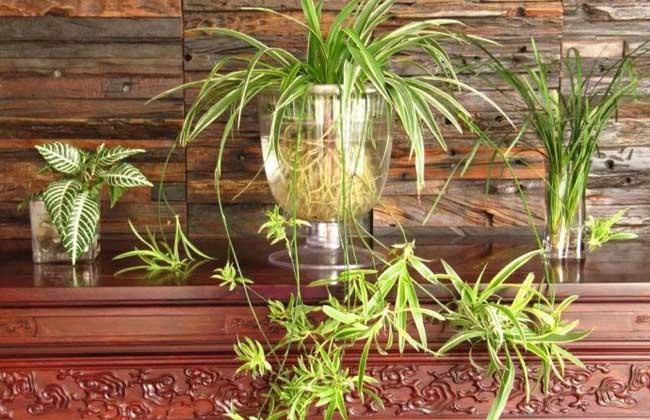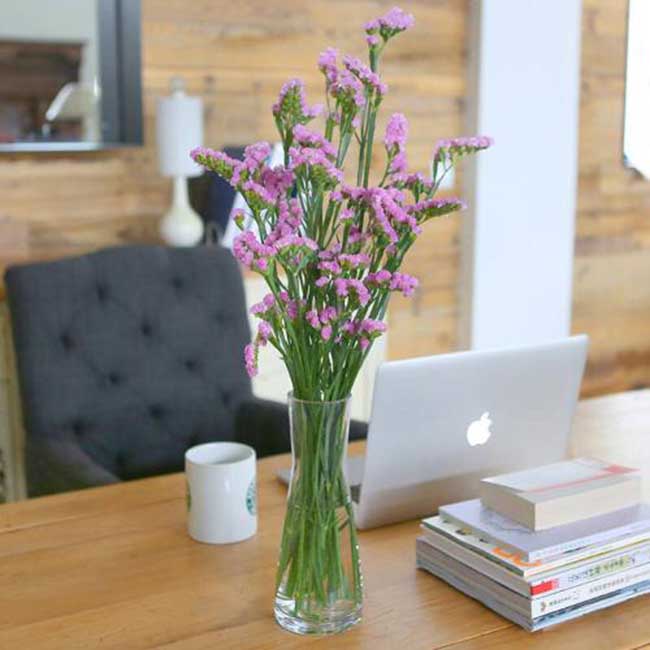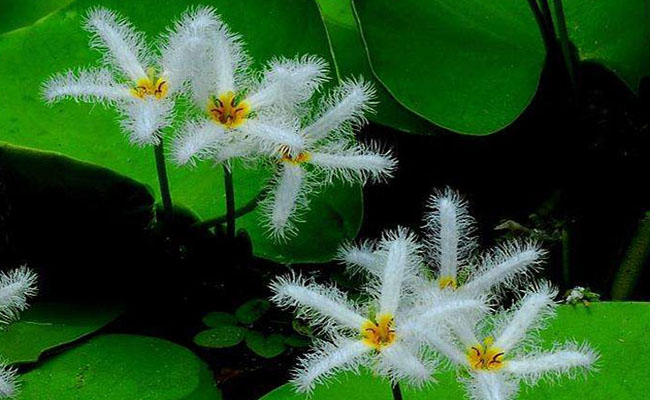Summing up the experience of presbyopia farmers for many years, these 10 kinds of hydroponic plants are best cultivated.

Hydroponic culture is a new type of indoor soilless cultivation, whose core is to fix the plant rhizome in the planting basket and make the root grow naturally into the plant nutrient solution. this nutrient solution can provide water, nutrients, temperature and other growth factors to plants instead of natural soil, so that plants can grow normally and complete their whole life cycle. let's take a look at the top 10 hydroponic plants that survive.
Rich bamboo
Fugui bamboo is a very good survival hydroponic plant, which likes high temperature, wet, waterlogging, fertility, cold resistance and semi-shade environment. it is suitable to grow in sandy soil or semi-muddy sand and alluvial clay with good drainage. Like the warm environment, the temperature is suitable for 18-24 ℃, can grow all the year round, below 13 ℃, the plant dormancy and stop growing. When the temperature is too low, because the root system does not absorb enough water, the leaf tip and leaf edge will appear yellow-brown patches, and the lowest overwintering temperature should be more than 10 ℃. Light requirements are not strict, suitable for growth under bright scattered light, excessive light, exposure will cause leaves yellowing, chlorosis, slow growth and other phenomena.
Hanging orchid
Cymbidium prefers warm, humid, semi-overcast environment, strong adaptability, drought tolerance, not very cold resistance, no choice of soil, and grows better in well-drained, loose and fertile sandy soil. Light requirements are not strict, generally suitable for growth in medium light conditions, but also resistant to weak light. The suitable temperature for growth is 1525 ℃, and the overwintering temperature is 5 ℃. When the temperature is 20-24 ℃, the growth is the fastest, and it is easy to produce stolons. When the growth stops at more than 30 ℃, the leaves often turn yellow and dry. In winter, the plant can grow normally when the room temperature is more than 12 ℃. If the temperature is too low, the plant will grow slowly or dormant, and if the temperature is lower than 5 ℃, it is easy to cause chilling injury.
Green pineapple
Green pineapple is a kind of beautiful flower which is very suitable for indoor planting, negative plant, like scattered light, more resistant to shade. It is called "the flower of life" because of its tenacious vitality. Spread down the green branches and leaves, very easy to meet. In indoor cultivation, whether it is potted or folded a few stems, hydroponic culture can grow well. It can not only be attached to the column made of brown, but also can be cultivated into a hanging shape to be placed in the study, windowsill, or directly potted.
Ivy
Ivy is very suitable for indoor and outdoor breeding, strong adaptability to the environment, like the cool climate, strong cold tolerance, avoid high temperature and muggy environment, the temperature above 30 ℃ growth stagnation, light requirements are not strict, in direct sunlight or lack of light indoor can grow and develop. Classic negative plants can grow normally in weak light and can also grow in sufficient light. They are suitable for growing in warm and humid environments and are afraid of cold. Water is easy to raise and has strong vitality.
Hyacinth
Hyacinth habits like the sun, cold-resistant, suitable for growing in a cool and humid environment and loose, fertile sandy soil, avoid stagnant water. Like warm and humid winter, cool summer slightly dry, sunny or semi-overcast environment. Like fertilizer, suitable for fertile, well-drained sandy loam. It can be planted in the ground, potted or raised in water. In the process of growth, the root growth of bulb was the best at 2: 6 ℃, the optimum temperature for bud germination was 5: 10 ℃, the optimum temperature for leaf growth was 5: 12 ℃, the optimum flowering stage was 15: 18 ℃, the storage temperature of bulb was 20: 28 ℃, and 25 ℃ was the best for flower bud differentiation and could tolerate short-term frost.
Alocasia macrorrhiza
Dishui Guanyin, also known as sea taro and aunt taro, is a perennial evergreen herb. Soil plants can be changed into hydroponic plants by root washing, which should be washed carefully when washing roots. Please do not damage tubers and roots, and cut off rotten roots and aged roots at the same time. If the tuber is rootless, it should be dried in a shady place for 2-3 days, and then immersed in water after the wound is dry. After 2-3 days, the new root can be seen. In the initial stage of hydroponic culture, the water should be changed once every 2 to 3 days, and the suitable water depth is 2 beat 3 of the immersed root system. After 3 weeks, the new root can grow. After 3 weeks, the hydroponic plant is adapted to the hydroponic environment, and then changed to nutrient solution culture.
Phoenix eye blue
Phoenix eye blue, also known as water hyacinth, and so on, likes a warm, humid, sunny environment with strong adaptability. The suitable water temperature is 18 ~ 23 ℃. It can grow even if it exceeds 35 ℃. It can stop growing when the air temperature is below 10 ℃. It has certain cold tolerance. Like to be born in shallow water, can also grow in a body of water with a low flow rate, and drift with the water. Reproduce rapidly. After flowering, the flower stem bends into the water and the ovary develops and expands in the water.
Tongqian grass
Codonopsis lanceolata leaves round wavy edge, long stem, summer and autumn small yellow-green flowers, sex like warm and humid, cultivation in half-day or shade is better, avoid direct sunlight, cultivation soil is better, soft and well-drained soil is better, or directly cultivated with water, the optimum water temperature is 22-28 degrees, shade and moisture tolerance, slightly drought tolerance, strong adaptability, strong nature, easy planting, rapid reproduction, amphibious.
Asparagus asparagus
Asparagus likes warm, humid and semi-overcast ventilated environment, can't bear cold and drought in winter, can't pour too much water, root will rot, and avoid direct sunlight in summer. It is better to cultivate loose, fertile and well-drained sandy loam rich in humus. It is suitable to keep the room temperature between 12-18 ℃, ventilation and heat dissipation when the temperature is over 20 ℃, the suitable growth temperature is 15-25 ℃, and the overwintering temperature is 5 ℃. Born in the mountains, but also cultivated in the garden.
Lotus
Lotus is an aquatic plant, which prefers relatively stable calm shallow water, lakes, marshes, marshes and ponds, and its water demand depends on its varieties. Large plant-shaped varieties such as ancient lotus and red thousand leaves are relatively deep, but can not exceed 1.7 meters. Small and medium-sized plants are only suitable for water depth of 20 cm to 60 cm. At the same time, the lotus is very sensitive to water loss, as long as there is no irrigation for 3 hours in summer, the lotus leaves planted in the water tank will languish. If the water stops for one day, the lotus leaves will be scorched and the buds will wither. The lotus also likes light very much and needs full light during its growth period. Extremely intolerant to shade, growing in the semi-shade will show a strong phototaxis.
Greening and maintenance methods: an old florist taught you 4 skills to maintain white palm.
White palm is a kind of plant that is very popular in modern families. White palm can not only bring fresh air to the family, but also play a good fengshui condition. White palm has higher requirements for soil and temperature, so it is not easy to raise it. White palm can be cultivated not only in soil, but also in water. Below, the editor mainly shares some breeding methods and matters needing attention of soil culture!
1. Like warm, humid and semi-overcast environment, avoid direct sunlight and be afraid of cold. Avoid sticking heavy soil, should be rich in humus sandy loam. The amount of water should be reduced at the end of autumn and winter to keep the basin soil slightly moist.
2. White crane taro is more shade-resistant, as long as it has about 60% scattered light to meet its growth needs, so it can be cultivated in indoor places with bright scattered light all the year round. Summer can cover 60% to 70% of the sun, avoid bright light, otherwise the leaves will turn yellow, and sunburn will occur in serious cases.
3. When planting white palm, add a small amount of organic fertilizer as base fertilizer. During the growth period, we should often keep the basin soil moist, but to avoid watering too much, the basin soil is moist for a long time, otherwise it is easy to cause rotten roots and plants withered and yellow.
4. White crane taro is the most popular pest during the growth period, so special mites should be sprayed regularly, such as triclofenac, Nisolan, pyridaben and so on.
An old florist taught you four tips to take care of white palm.
China Garden Network, March 15: White palm is a very popular plant in modern families. White palm can not only bring fresh air to the family, but also play a good fengshui condition. White palm has higher requirements for soil and temperature, so it is not easy to raise it. White palm can be cultivated not only in soil, but also in water. Below, the editor mainly shares some breeding methods and matters needing attention of soil culture!
1. Like warm, humid and semi-overcast environment, avoid direct sunlight and be afraid of cold. Avoid sticking heavy soil, should be rich in humus sandy loam. The amount of water should be reduced at the end of autumn and winter to keep the basin soil slightly moist.
2. White crane taro is more shade-resistant, as long as it has about 60% scattered light to meet its growth needs, so it can be cultivated in indoor places with bright scattered light all the year round. Summer can cover 60% to 70% of the sun, avoid bright light, otherwise the leaves will turn yellow, and sunburn will occur in serious cases.
3. When planting white palm, add a small amount of organic fertilizer as base fertilizer. During the growth period, we should often keep the basin soil moist, but to avoid watering too much, the basin soil is moist for a long time, otherwise it is easy to cause rotten roots and plants withered and yellow.
4. White crane taro is the most popular pest during the growth period, so special mites should be sprayed regularly, such as triclofenac, Nisolan, pyridaben and so on.
- Prev

The culture method and efficacy of forget-me-not
Forget-me-not growth habit forget-me-not strong adaptability, like dry, cool climate, avoid hot and humid, like light, drought resistance, the suitable growth temperature is 20 ℃-25 ℃. It is suitable to grow in loose, fertile and well drained slightly alkaline soil.
- Next

Culture methods and disease and pest control of anemone
Anemone perennial aquatic herbs. Stem cylindrical, unbranched, shaped like petiole, terminal simple leaf. Leaves floating, subleathery, broadly ovoid or suborbicular, densely glandular below, base cordate, entire, with inconspicuous palmate veins, petiole short, Terete, flowers numerous, clustered nodes, pedicel slender, Terete
Related
- Fuxing push coffee new agricultural production and marketing class: lack of small-scale processing plants
- Jujube rice field leisure farm deep ploughing Yilan for five years to create a space for organic food and play
- Nongyu Farm-A trial of organic papaya for brave women with advanced technology
- Four points for attention in the prevention and control of diseases and insect pests of edible fungi
- How to add nutrient solution to Edible Fungi
- Is there any good way to control edible fungus mites?
- Open Inoculation Technology of Edible Fungi
- Is there any clever way to use fertilizer for edible fungus in winter?
- What agents are used to kill the pathogens of edible fungi in the mushroom shed?
- Rapid drying of Edible Fungi

